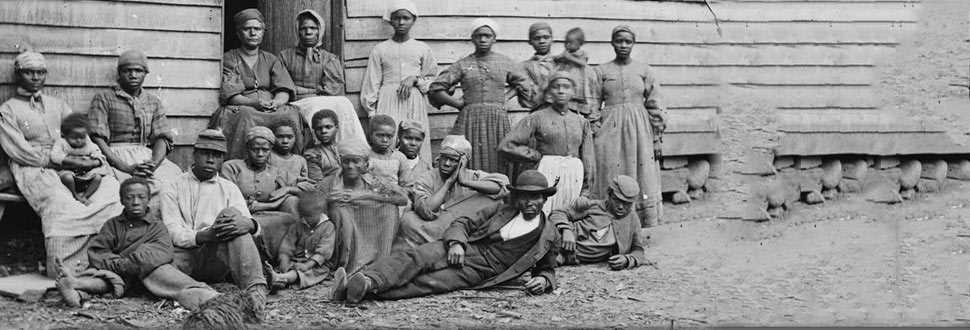Definition and Origins of Indentured Servitude
The origins of indentured servitude can be traced back to the 17th century, primarily in the British colonies of North America. It emerged as a solution to the labor shortage faced by the colonists, who needed a workforce to cultivate the land and develop their settlements. Indentured servitude provided a means for individuals, typically from lower socioeconomic backgrounds, to secure passage to the colonies and improve their prospects.
Under the indenture agreement, the servant would typically work for a set number of years, usually ranging from four to seven years. During this period, the servant was considered the property of the master and was obligated to perform various tasks, such as agricultural work, household chores, or skilled labor, depending on the specific terms of the agreement.
Indentured servitude differed from other forms of labor exploitation, such as slavery, in that it was a temporary arrangement with a defined end date. Once the servant fulfilled their contractual obligations, they were granted their freedom and often received a small parcel of land, tools, or other resources to start their new life.
However, it is important to note that indentured servitude was not a voluntary choice for many individuals. Economic hardships, limited opportunities, and social pressures often compelled individuals to enter into indenture agreements. Additionally, the conditions and treatment of indentured servants varied widely, with some experiencing harsh treatment and abuse from their masters.
Indentured Servitude in the Americas

Indentured servitude played a significant role in the development of the American colonies. It provided a cheap and readily available labor force that contributed to the growth of industries such as agriculture, tobacco cultivation, and trade.
The majority of indentured servants in the Americas were from Europe, particularly from England, Scotland, and Ireland. They sought better economic prospects and opportunities for upward mobility in the colonies. Many were young men and women who were willing to exchange their labor for the chance to start a new life in a foreign land.
Indentured servitude also had a profound impact on the demographics and social structure of the colonies. The influx of indentured servants, along with enslaved Africans, contributed to the diversification of the population and the emergence of a racially stratified society.
Legacy and Controversy
The legacy of indentured servitude is complex and continues to be a topic of debate and controversy. While it played a crucial role in the development of the American colonies, it also perpetuated systems of exploitation and inequality.
Indentured servitude has been criticized for its similarities to slavery, particularly in terms of the harsh treatment and limited rights afforded to servants. The system also reinforced social hierarchies and contributed to the marginalization of certain groups, such as women, people of color, and those from lower socioeconomic backgrounds.
Historical Context and Impact of Indentured Servitude
The historical context of indentured servitude is closely tied to the colonization of the Americas. European powers, such as England, France, and Spain, sought to establish colonies in the New World and needed a cheap labor force to support their economic endeavors. Indentured servitude provided a solution to this need by offering a way for individuals to migrate to the colonies in exchange for their labor.
The impact of indentured servitude on both the colonies and the individuals involved was significant. For the colonies, indentured servants played a crucial role in the development of the agricultural and labor-intensive industries, such as tobacco and sugar plantations. They provided the necessary workforce to clear land, plant crops, and harvest the produce.
However, the conditions of indentured servitude were often harsh and exploitative. Indentured servants were subject to strict contracts that limited their freedom and subjected them to physical punishment. Many servants faced abuse and mistreatment at the hands of their masters, and their contracts were often extended due to various reasons, such as misconduct or illness.
Despite the hardships, indentured servitude also offered opportunities for individuals to escape poverty and seek a better life in the colonies. After completing their contracts, many servants were able to establish themselves as free citizens and even landowners. Some even became successful entrepreneurs or influential members of society.
Indentured servitude played a significant role in shaping the social and economic landscape of the colonies. It helped to populate the colonies with a diverse labor force and contributed to the growth of industries. However, it also perpetuated a system of inequality and exploitation, with the servants being at the mercy of their masters.
Over time, indentured servitude began to decline as other labor systems, such as slavery, became more prevalent. The introduction of African slaves in the late 17th century provided a cheaper and more permanent labor force for the colonies. This shift marked a turning point in the history of indentured servitude and eventually led to its demise.

Emily Bibb simplifies finance through bestselling books and articles, bridging complex concepts for everyday understanding. Engaging audiences via social media, she shares insights for financial success. Active in seminars and philanthropy, Bibb aims to create a more financially informed society, driven by her passion for empowering others.
